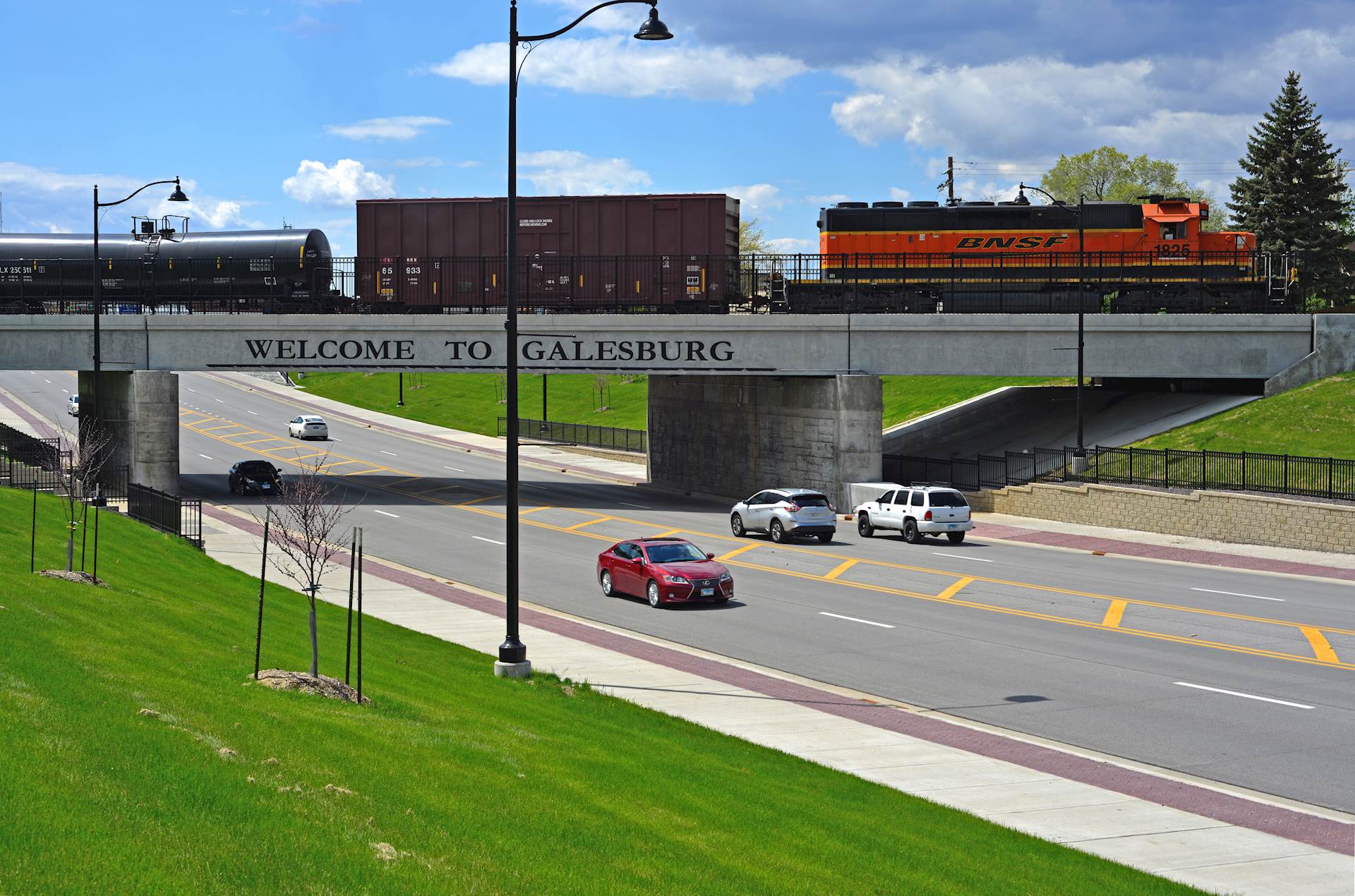![]()
 A new underpass on East Main Street in Galesburg, Illinois, was a complex project that needed close coordination with the railroad to keep track closures to a minimum.
A new underpass on East Main Street in Galesburg, Illinois, was a complex project that needed close coordination with the railroad to keep track closures to a minimum.
Public agencies that improve their property sometimes face major stumbling block: the presence of a railroad track or two. It doesn’t matter whether the project is a culvert replacement, a pedestrian walkway, an underpass or an overpass — the coordination and planning steps with the railroad are the same.
Railroad specifics, timelines are guidelines
Each major railroad has some form of public projects manual and review process. This is where the specifics of the permits, contracts, submittals and timelines are stated. While these details are laid out in the manual, it is helpful to plan projects with the understanding that the review specifics and timelines are general guidelines, and timelines can extend beyond what is published. Don’t make railroad reviews, coordination and agreements be the critical path items.
Get a team member who knows the railroad’s preferences
One surefire way to make the railroad coordination process go as smoothly as possible on a public project is to have someone on your team who understands the railroad’s preferences. Railroads are typically very conservative about using new technology or methods during construction. This isn’t because the railroads don’t want to modernize; it is because running trains is their primary job. Anything that could pose a risk to trains is a risk to the railroad.
One common way this comes into play is the use of mechanically stabilized earth (MSE) walls. This type of retaining wall is commonly used on roadway projects, but railroads rarely let them near their tracks. The use of MSE walls can delay plan reviews and acceptance while the type of wall is weighed against the perceived risk to the railroad. It is often better to avoid the issue in the first place.
Get a designer who knows standards for rail
When a project involves constructing a new structure to support a railroad track, the project needs a designer who is experienced with the railroad’s design standards and the American Railway Engineering and Maintenance-of-Way Association manual. Whether this structure is a culvert, bridge or retaining wall, the railroad will be more comfortable knowing that a designer who regularly does work for them is also the one who is working for the public agency. This can help the railroad take the public project seriously and could prevent the project from becoming lost among the many other projects in the queue for review.
Watch for construction constraints
Even after a project makes its way through the plan approval phase, there are construction constraints the project planners must be aware of. Any work that is done on railroad property will have to be done by contractors who have specific safety training and background checks. A contractor who has experience working with railroads will often give a more realistic bid and won’t be surprised by delays from railroad traffic.
Travis Painter can help you with your public project affected by a railroad. Contact him at tpainter@hanson-inc.com.